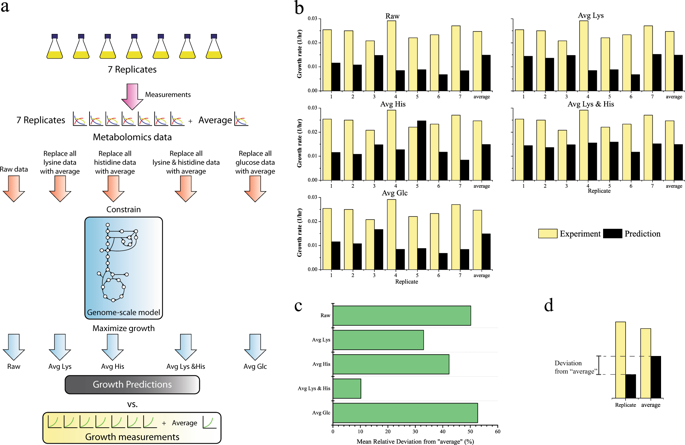当前位置:
X-MOL 学术
›
npj Syst. Biol. Appl.
›
论文详情
Our official English website, www.x-mol.net, welcomes your
feedback! (Note: you will need to create a separate account there.)
An unconventional uptake rate objective function approach enhances applicability of genome-scale models for mammalian cells.
npj Systems Biology and Applications ( IF 3.5 ) Pub Date : 2019-07-23 , DOI: 10.1038/s41540-019-0103-6 Yiqun Chen 1 , Brian O McConnell 2 , Venkata Gayatri Dhara 1 , Harnish Mukesh Naik 1 , Chien-Ting Li 1 , Maciek R Antoniewicz 2 , Michael J Betenbaugh 1
npj Systems Biology and Applications ( IF 3.5 ) Pub Date : 2019-07-23 , DOI: 10.1038/s41540-019-0103-6 Yiqun Chen 1 , Brian O McConnell 2 , Venkata Gayatri Dhara 1 , Harnish Mukesh Naik 1 , Chien-Ting Li 1 , Maciek R Antoniewicz 2 , Michael J Betenbaugh 1
Affiliation

|
Constraint-based modeling has been applied to analyze metabolism of numerous organisms via flux balance analysis and genome-scale metabolic models, including mammalian cells such as the Chinese hamster ovary (CHO) cells-the principal cell factory platform for therapeutic protein production. Unfortunately, the application of genome-scale model methodologies using the conventional biomass objective function is challenged by the presence of overly-restrictive constraints, including essential amino acid exchange fluxes that can lead to improper predictions of growth rates and intracellular flux distributions. In this study, these constraints are found to be reliably predicted by an "essential nutrient minimization" approach. After modifying these constraints with the predicted minimal uptake values, a series of unconventional objective functions are applied to minimize each individual non-essential nutrient uptake rate, revealing useful insights about metabolic exchange rates and flows across different cell lines and culture conditions. This unconventional uptake-rate objective functions (UOFs) approach is able to distinguish metabolic differences between three distinct CHO cell lines (CHO-K1, -DG44, and -S) not directly observed using the conventional biomass growth maximization solutions. Further, a comparison of model predictions with experimental data from literature correctly correlates with the specific CHO-DG44-derived cell line used experimentally, and the corresponding dual prices provide fruitful information concerning coupling relationships between nutrients. The UOFs approach is likely to be particularly suited for mammalian cells and other complex organisms which contain multiple distinct essential nutrient inputs, and may offer enhanced applicability for characterizing cell metabolism and physiology as well as media optimization and biomanufacturing control.
更新日期:2019-07-23











































 京公网安备 11010802027423号
京公网安备 11010802027423号